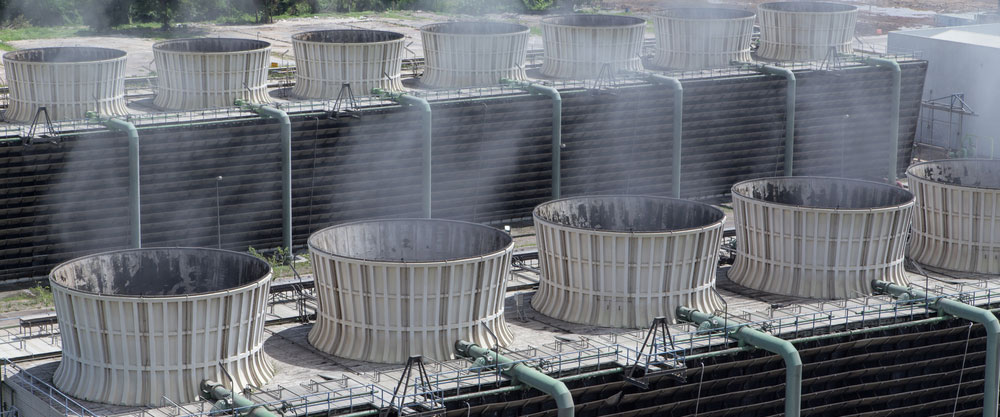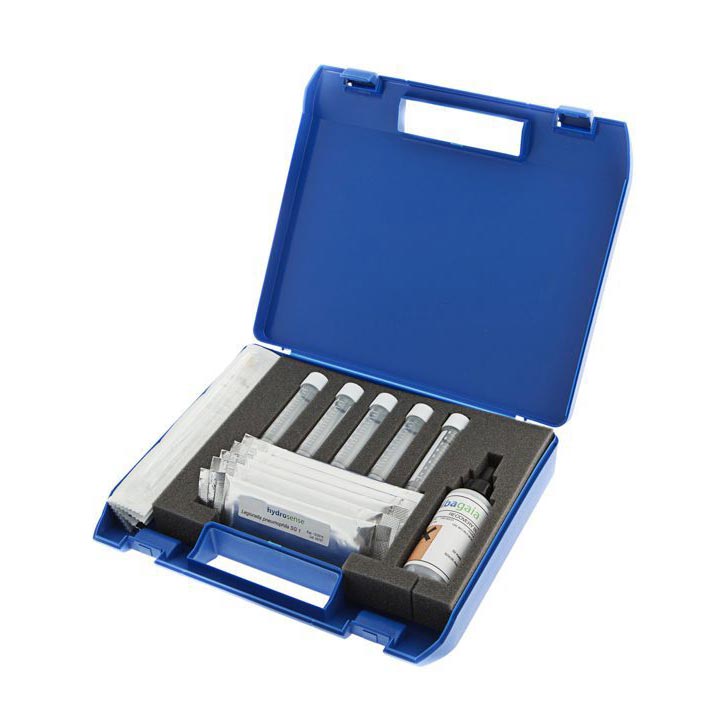
Legionella Testing For Cooling Towers
Cooling towers are a leading source of outbreaks of Legionnaires’ disease. For instance, in New York in 2015, a large outbreak of Legionnaires’ disease caused by a cooling tower sickened 138 people and killed 16.1
Water within cooling towers is heated via heat exchange, a process which creates ideal conditions for Legionella heat-loving bacteria to grow. CDC research shows that from 194 cooling towers tested in the US, 84% of them returned a positive result for Legionella DNA, meaning the bacteria were either present or had been present in the system at some point 2.
Factors Affecting Increased Risk of Legionella in Cooling Towers
- Generation of Aerosols– Because of their ability to spread Legionella over a wide area, cooling towers are regarded as one of the most dangerous and heavily regulated sectors in the water treatment and Legionella control industry.
- Biofilm accumulation– Cooling towers continuously wash the air as they operate, and because of this, they are constantly collecting debris, dirt and dust during the cooling process. Even if regular maintenance of the cooling tower is implemented properly, dust and debris will still enter and collect in the basin of the tower. Depending on where the cooling tower is located, the amount of material collecting in the water can be extensive and can contribute to the growth of biofilms that provide nutrients for Legionella to survive and grow.4
- Temperature-In many cooling towers, the sides are open, allowing sunlight to reach the cooling tower basin and encouraging algae to grow. It is important to protect the cooling tower basin (and the top deck of larger cooling towers) from sunlight as the temperature of the water in the system has a direct impact on the rate of Legionella growth.3
- Water quality– Make-up water usually comes from a municipal or well supply but can sometimes come from a holding tank, which can contain sludge, rust, and sediment. Less commonly used, surface water that comes from lakes, rivers, or reservoirs could be full of microorganisms and nutrients from the environment.
- Stagnant Water – Areas of stagnant water can prevent successful chemical treatment of the towers and allow Legionella and their hosts to flourish. 4
- Traditional Testing Methods – Duty holders in cooling towers are often advised to send samples of water to a laboratory. This is a well-known, traditional method for Legionella testing, however, researchers have recently found some disturbing limitations of this technique.
Click Here to Find Out More About Limitations of the Lab Culture Test
Remember that it is simply not enough to rely solely on the lab culture test. Doing so can lead to false negative results, underestimated counts of Legionella bacteria, slow decision making and delayed action – resulting in fines, reputational damage, illness and even fatalities.
How to Manage The Risk of Legionella in Cooling Towers
From a legal and regulatory position, it is not sufficient to hire a water management company and then rely on their best efforts. The facility owner is ultimately liable for the safety of the premises and has to be sure that all reasonable practical control measures are being taken – not just that the minimum requirements have been fulfilled. In practice, even the most well-managed water systems are subject to failures and cannot always meet the required control criteria.
Innovative technology from Hydrosense provides a simple solution for cooling tower owners to manage Legionella risks quickly and accurately. Hydrosense provides fast results on-site, without expert assistance, so it is simple to monitor between regulatory quarterly checks. If there is a problem, it is immediately identified, and prompt remedial action can be taken to protect clients, staff and the public. Using the test can also help to protect your reputation and your business from public liability claims. Additionally, the Hydrosense Smartphone reader app allows users to easily read the test and store results’ data. Further, once a problem has been identified and dealt with, it is possible to check the efficacy of the remedial action quickly. This provides the confidence and the data on which to restart operations.
Legionella – Don’t risk it. Test it.
How to use the Hydrosense Test to manage Legionella risks in cooling towers? – EPSCO case study
Recommended Kits
Connect the adaptor from the Hydrosense Industrial Kit to the sample point in a cooling tower to easily collect repeated water samples for testing.
To check surfaces are not harbouring Legionella in the biofilm, use the Swab Test Kit.
References
- CDC (2017) Legionnaires’ Disease Outbreak Caused by Endemic Strain of Legionella pneumophila, New York, New York, USA, 2015, online. Available at: https://wwwnc.cdc.gov/eid/article/23/11/17-0308_article[Accessed 11 Oct 2018].
- Llewellyn AC., Lucas C., Roberts S.E., Brown E.W., Nayak B.S., Raphael B.H., Winchell J.M. (2017) Distribution of Legionella and bacterial community composition among regionally diverse US cooling towers, US National Library of Medicine National Institutes of Health, online. Available at https://www.ncbi.nlm.nih.gov/pubmed/29261791[Accessed 05 Oct 2018].
- Victoria State Government (unknown) Legionella – treating the critical risks in cooling towers: Section 8 Available, online Available at https://www2.health.vic.gov.au/public-health/water/legionella-risk-management-guidelines/guide-cooling-tower-risk-management-plans/legionella-treating-critical-risks-in-cooling-towers-section-8[Accessed 09 Oct 2018]
- Delta Cooling Towers (2017) How do you Prevent Legionnaires’ Disease in Cooling Towers? online Available at https://deltacooling.com/resources/faqs/preventing-legionnaires-disease-in-cooling-towers[Accessed 10 Oct 2018]
Other Resources
- HSE, Management of the risks from Legionella in cooling towers and evaporative condensers: http://www.hse.gov.uk/safetybulletins/coolingtowers.htm


